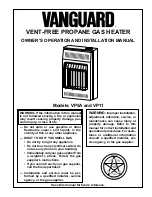
21
EN
The appliance must be disconnected from the on-board
power supply when electric welding work is being carried out
on the body.
If the appliance is connected with incorrect polarity, the
appliance fuse (43) will be tripped. The appliance can be
used again after restoring the correct polarity and replacing
the fuse (43).
If the caravan (Vehicle Class O) is used for autonomous heat-
ing without a connection to the mains, a body battery must
be provided. A 12 V power supply for autonomous heating
via the towing vehicle (PIN 9 or 10 – 13-pole plug trailer cou-
pling) is not permissible.
In order to guarantee optimum powersupply, the heater
must
be connected to the fused on-board power supply (central
electrical system 10 A)
with a 2 x 2.5 mm²
cable (2 x 4 mm²
of between 6 m and a maximum of 10 m total length) . Volt-
age drops in the supply line must be taken into consideration
if necessary. Connect negative line to main ground connec-
tion. If the equipment is connected directly to the battery, the
positive and negative lines must be protected. For the con-
nections (40, 41), we recommend 6.3 mm fully insulated flat
connectors.
No other consumers must be connected to the supply line!
Power supply with power supply unit without battery
– The controlled output voltage of the power supply unit must
be between 11 V and 15 V.
– The AC voltage ripple must be < 1.2 Vss.
– The power supply unit must constantly provide the heater
with at least 25 A. If this is not guaranteed due to other con-
sumers being connected and operated on the power supply
unit, the heater requires its own power supply unit.
Alternatively, a power supply unit can be used that con-
stantly provides the heater with at least 10 A. This must
have short-circuit protection on the output side for each
outgoing circuit. The short circuit protection must switch
off the voltage supply to the heater within 1 s. Following a
shutdown due to a short circuit, the voltage supply must
not be restored until after the heater has been inspected
and additional manual action has been taken (e.g. engag-
ing a circuit breaker or replacement of a meltable fuse).
Room temperature sensor
Attach the plug of the connector cable to the connection (46)
(no need to observe polarity).
Control panel / air conditioning system
The following connection combinations are possible.
Analogue control panels
1 CP classic control panel Combi
(heater without electric heating
elements)
Digital control panels
1 CP plus control panel
Combi (E)
(heater with / without electrical
heating elements)
and
1 Air conditioning system Suitable systems – see
CP plus control panel operating
instructions
Insert the plug of the connector cable into one of the connec-
tions (47 or 48) and engage.
230 V ~ voltage supply
(Combi E – with electrical heating elements)
The 230 V electrical connection must always be made
by a qualified expert ((in accordance with VDE 0100,
part 721 or IEC 60364-7-721, for example, in Germany).
The 230 V electrical connection must be made on a fused
circuit with a rating of at least 10 A (preferably 16 A).
The following must be provided for the Combi E in the circuit
of the caravan / motor home:
– A suitable residual current circuit-breaker
– Mains disconnect switch (for maintenance and repair work)
These switches must disconnect at all poles and must have
the specified contact spacing (minimum 3.5 mm).
l = 150 cm
Figure 23
– Cables must be secured using suitable clamps.
– Lay cables / lines of low-voltage systems physically sepa-
rate from those for extra low-voltage systems.
Function check
The leak tightness of the gas supply line must be tested using
the pressure drop method after installation. A test certificate
must be issued (e.g. in accordance with DVGW Work Sheet
G 607 in Germany).
Then check all functions of the appliance as described in the
operating instructions, particularly the drainage of the water
contents.
No claims may be made under the warranty for
damage caused by frost.
The operating instructions must be handed over to the vehicle
owner.
The year when the equipment was first put into opera-
tion must be indicated with a cross on the type plate.
Warnings
The installer or vehicle owner must affix the yellow sticker
with the warning information, which is enclosed with the ap-
pliance, in a location in the vehicle where it is clearly visible to
all users. Missing stickers can be requested from Truma.
















































